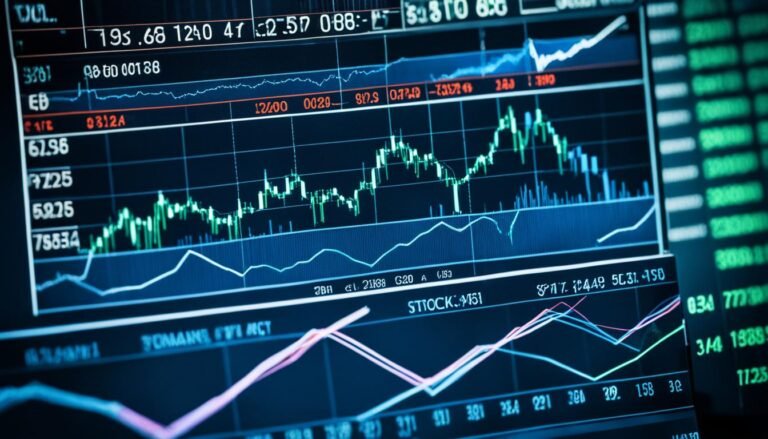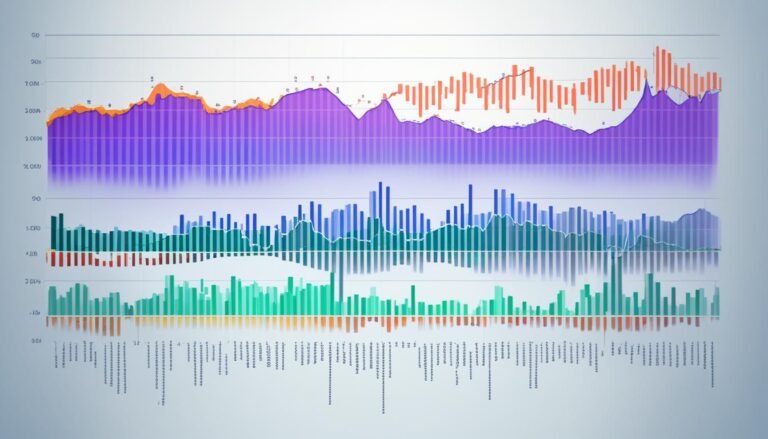Maximize Your Profits: Insider Day Trading Tips for Financial Success
Day Trading Strategies
Trading can be a wild ride, but having a solid game plan can make all the difference. Let’s break down two main ways to play the market: technical analysis and fundamental analysis. These methods are your go-to tools for making smart moves.
Technical Analysis
Technical analysis is like reading the market’s mind by looking at its past behavior. Traders check out historical price data and trading volume to guess where prices might go next. They use charts and indicators to spot trends and figure out the best times to buy or sell. Here are some popular tools:
| Tool | What It Does |
|---|---|
| Moving Averages | Smooths out price data to highlight trends |
| RSI (Relative Strength Index) | Measures momentum to find overbought or oversold conditions |
| MACD (Moving Average Convergence Divergence) | Shows changes in momentum and trend direction |
Traders love candlestick patterns for trading because they make price movements easy to see. Knowing these patterns can help you make quick decisions. If you’re into intraday trading strategies, mastering technical analysis is a must.
Fundamental Analysis
Fundamental analysis is all about digging into what makes a company tick. This method looks at economic indicators, financial reports, and news to gauge an asset’s true value. Key elements include:
| Element | What It Means |
|---|---|
| Earnings Reports | How a company is doing financially each quarter |
| Economic Indicators | Data like GDP growth, unemployment rates, and inflation |
| Industry Trends | Overall market conditions affecting a sector |
Traders using fundamental analysis aim to spot long-term value and market shifts. This approach is handy for timing trades, especially if you’re into options trading strategies or forex trading for beginners.
Combining both technical and fundamental analysis can give you a well-rounded view. Many successful traders use a mix of both to make better decisions. If you’re curious about different trading styles, check out our article on day trading vs swing trading for some great insights.
Risk Management
Trading without a plan is like driving blindfolded. Effective risk management is your seatbelt, airbag, and insurance all rolled into one. It keeps your investments safe and can make a big difference in your profits over time. Two key parts of risk management are setting stop-loss orders and figuring out the right position size.
Setting Stop-Loss Orders
Think of stop-loss orders as your safety net. They tell your broker to sell a stock when it hits a certain price, cutting your losses before they get out of hand. This is a must-do for anyone serious about trading.
| Stop-Loss Type | What It Does |
|---|---|
| Fixed Stop-Loss | Sells at a set price you choose. |
| Trailing Stop-Loss | Moves with the stock price, locking in gains as it rises. |
According to Investopedia, stop-loss orders help you avoid making emotional decisions when the market gets crazy. They act like a safety net, keeping your losses manageable. For more tips, check out TradingView.
Position Sizing
Position sizing is all about deciding how much of your money to put into a trade. Get this right, and you can protect your cash while still aiming for good returns.
| Account Balance | Risk Percentage | Position Size |
|---|---|---|
| $10,000 | 1% | 100 shares of a $10 stock |
| $20,000 | 2% | 200 shares of a $10 stock |
| $50,000 | 1.5% | 300 shares of a $15 stock |
By figuring out the right position size, you can manage your risk better. Warrior Trading suggests risking only a small part of your total account on any single trade. This way, one bad trade won’t wipe you out. For more on this, check out The Balance.
Using smart risk management techniques like stop-loss orders and proper position sizing can really boost your trading game. For more tips, check out our articles on intraday trading strategies and stock trading strategies.
Market Psychology
Getting a grip on market psychology is a game-changer for any trader. It’s all about keeping your cool and sticking to your game plan. Let’s break it down into two main parts: keeping your emotions in check and staying disciplined.
Controlling Emotions
Keeping your emotions in check is a must-have skill for any trader. When emotions run wild, decisions can go haywire, leading to bad trades. Fear, greed, and anxiety are the usual suspects that mess with your performance. Here’s how to keep those emotions in check:
- Set Clear Goals: Having clear, doable goals can give you direction and keep the jitters at bay.
- Practice Mindfulness: Mindfulness techniques can help you stay calm and focused, stopping those knee-jerk reactions.
- Take Breaks: Sometimes, you just need to step away from the screen to clear your head and chill out.
Keeping a trading journal can also be a lifesaver. Jotting down your emotional ups and downs and the decisions you make can help you spot patterns and triggers, making it easier to manage your emotions next time.
Staying Disciplined
Discipline is the backbone of successful trading. The pros stick to their strategies and risk management rules, no matter how crazy the market gets. Here’s how to keep your discipline in check:
- Develop a Trading Plan: A solid trading plan lays out your entry and exit strategies, risk management rules, and criteria for making trades. Sticking to this plan keeps you focused and disciplined.
- Avoid Overtrading: Overtrading is a common trap, often driven by emotions. Set a limit on the number of trades you make each day to avoid this.
- Review and Reflect: Regularly looking back at your trading performance helps you learn from your mistakes and successes. This habit reinforces discipline and keeps you on the path of continuous improvement.
By following these tips, you can boost your emotional control and discipline, which are key for long-term success in trading. Want to dive deeper into trading strategies? Check out our articles on intraday trading strategies and stock trading strategies.
Trading Tools
Day trading can be a wild ride, and having the right gear is like having a trusty sidekick. Let’s break down two must-haves: trading platforms and real-time data sources.
Trading Platforms
Picking the right trading platform is like choosing the right car for a race. It can make or break your game. You want something that’s easy to use, has killer charting tools, and doesn’t lag when you hit the gas. Here are some top picks:
| Trading Platform | Key Features | Ideal For |
|---|---|---|
| TD Ameritrade | Tons of research tools, educational goodies, and advanced trading platforms | Stock and options traders |
| E*TRADE | Customizable dashboards and powerful trading tools | Beginners and pros alike |
| Interactive Brokers | Low commissions and access to global markets | Serious traders and investors |
| Fidelity | Great customer service and loads of research tools | Long-term investors and day traders |
| Charles Schwab | Top-notch educational resources and easy-to-use interface | Newbies and casual investors |
Want to dig deeper? Check out our articles on cryptocurrency trading platforms and options trading strategies.
Real-Time Data Sources
Real-time data is your crystal ball in day trading. It tells you what’s happening right now with prices, market vibes, and trading volume. Here are some top-notch data providers:
| Data Provider | Features | Pricing |
|---|---|---|
| Bloomberg | All the financial news, analytics, and trading tools you could want | Subscription-based (premium pricing) |
| Thomson Reuters | Loads of financial data and analytics, customizable dashboards | Subscription-based (premium pricing) |
| TradingView | Community insights, charting tools, and social networking | Free and paid plans |
| Benzinga | Real-time news and analysis on market movers | Subscription-based |
| Yahoo Finance | Easy-to-use interface and broad market coverage | Free with ads, premium subscription available |
Knowing what’s happening in real-time is key to making smart trades. For more tips, check out our articles on intraday trading strategies and technical analysis for trading.
Using the right tools can help you spot opportunities and boost your profits. Happy trading!








